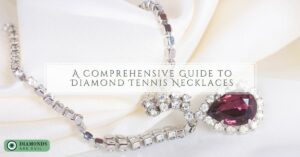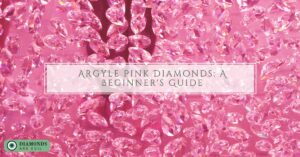Introduction
Diamonds are a special stone gem that is formed in the Earth’s core millions of years before its discovery. It is created from the bonding of carbon atoms that are in close proximity to the Earth’s core. Another interesting fact about diamonds is that after it is formed in the Earth’s core, it is transported to the Earth’s lithosphere by fast-moving molten magma during volcanic eruptions to about 100 kilometers away from the earth surface.
The explorations of diamonds from the Earth’s lithosphere require a lot of manpower, fossil energy consumption, and excavating several kilometers into the Earth. The mining process to extract just one carat of a diamond usually requires a lot of capital, and this has made the price of natural diamonds expensive and inflated.
Therefore, due to high capital and heavy engineering techniques that are required to extract diamonds from the earth crust, scientists started research on other ways of creating diamonds without mining. This, therefore, resulted in the creation of lab-grown diamonds.
Lab-grown diamonds
The creation of lab-grown diamonds started in the 1950s with the invention of the High-Temperature Pressure (HPHT) method. However, another method was also discovered in the 1980s to create diamonds in large and commercial quantities, which is the Chemical Vapour Deposition (CVD) method. These methods replicate the conditions which enable the creation of natural diamonds in the Earth’s core.
High-Temperature High Pressure (HPHT) Method
The invention of this method was in the 1950s, and it works with replicating the high temperature (over 2000 Fahrenheit) and high pressure (727,000 pounds) in a controlled laboratory environment.
This method begins with a small seed of diamond placed in pure carbon in a high-temperature high-pressure chamber. The heat in the chamber is increased to about 2000 Fahrenheit, which melts the carbon and therefore precipitates on the diamond, thereby forming larger diamonds.
Chemical Vapour Deposition
The use of this method started in the 1980s and is initiated by a small slice of diamond in a hydrocarbon mixture. The hydrocarbon is typically methane and hydrogen with a mixture ratio of 1:99, under a 900-degree Celsius temperature and 27Kpa pressure. The gas is ionized into active radicals in the growth chamber by the use of hot filament, microwave power, and laser.
Lab-grown diamonds and natural diamonds
There have been some arguments concerning the authenticity of lab-grown diamonds when comparing it to its counterpart, natural diamonds. Traditional jewelers believe that because lab-grown diamonds are not mined from the Earth’s crust, it cannot be genuine, hence the name synthetic diamonds. Other names of lab-grown diamonds are lab-created diamonds and man-made diamonds.
However, natural diamonds and lab-grown diamonds have the same refraction, physical, optical and chemical properties. Therefore, there is little or no difference in the structure of the two types of diamonds, and they can serve the same purpose.
Uses of diamond
Diamonds are well known for their aesthetics and beauty. Therfore, diamonds are used as a symbol of love, commitment, and romance. Due to it’s strong, hard and unique structure, diamonds serve various purposes:
- It is used in making jewelry, bracelets, necklace, wedding rings, engagement rings and other types of ornaments.
- It is used for industrial purposes, like cutting, drilling, polishing and mining. It is used to make edges of saw more effective and productive.
- It is used in manufacturing speaker dome, and it produces high-quality sound because of its structure.
- Other uses of diamonds are found in the computer, as beauty agents and in the treatment of cancer.
However, either of the two types of diamonds can be used for these purposes, because lab-grown diamonds and natural diamonds have the same properties and structure. This, therefore, means that both are genuine and authentic diamonds.
Worth of lab-grown diamonds
Worth is the value that is placed on products by a manufacturer, a dealer or a seller, which needs to be met before transactions. The worth of lab-grown diamonds depends on the following:
Cut
The beauty of a diamond properly depends on its facets and angle cuts. A diamond reflection of light depends on the cut; therefore, diamonds with an excellent cut will look more beautiful when reacting to light. Therefore, a diamond with a proper cut will be more expensive than a diamond with a good cut.
Carat
The weight of diamonds is properly measured in carat. Therefore, a 1-carat diamond won’t have the same price as a 2-carat diamond. This means that the heavier the diamond, the heavier the price.
Clarity
The clarity of diamonds depends on how it is free of inclusions and blemishes. This means the clearer and purer a diamond is, the more it will cost and vice versa.
Color
Diamond colors are rated on a scale of D (colorless) to Z (light yellow). Colorless diamonds are more expensive than colored diamonds because only a small percentage of diamonds are colorless.
Shape
Diamonds are of different shape, which includes, round, oval, marquise, cushion, heart. Round shaped diamonds give the best brilliance and are the most expensive, followed by oval and Asscher shape.
Certificates
Diamonds with reliable certificates give more assurance for quality, and it’s cut, clarity, color and weight are specified. The main diamond lab includes the Gemmological Institute of America (GIA), the International Gemmological Institute (IGI) and Hoge Raad Voor Diamant (HRD).
So what’s the difference
The price of natural diamonds usually differs from the price of a lab-grown diamond. For example, a 1.11 carat H VS2 lab-grown diamond looks exactly the same as a 1.10 carat H VS2 natural diamond, the price of the lab-grown diamond is $3,640 and the natural diamond cost $5,280 with a 45% price difference. Therefore, lab-grown diamonds are not as expensive as natural diamonds, and both can be used for the same purposes. Hence 30 to 45% can be saved on purchasing lab-grown diamonds.
However, with lab-grown diamonds are less expensive than natural diamonds, they do not have resale value like natural diamonds. Lab-grown diamonds cannot be resold to jewelers as high as natural diamonds, because its resale value is low, unlike natural diamonds which can be resold at 50% value and more of its original price.
Conclusion
Generally, natural diamonds are expensive stones, and this is due to the process, manpower and heavy engineering, which is involved in extracting it from the Earth’s crust. However, lab-grown diamonds are just a little less expensive than natural diamonds because of the cutting edge technology, which is involved in its creation. Hence, the worth of lab-grown diamonds gives a discount of 30 to 45%, over natural diamonds.






